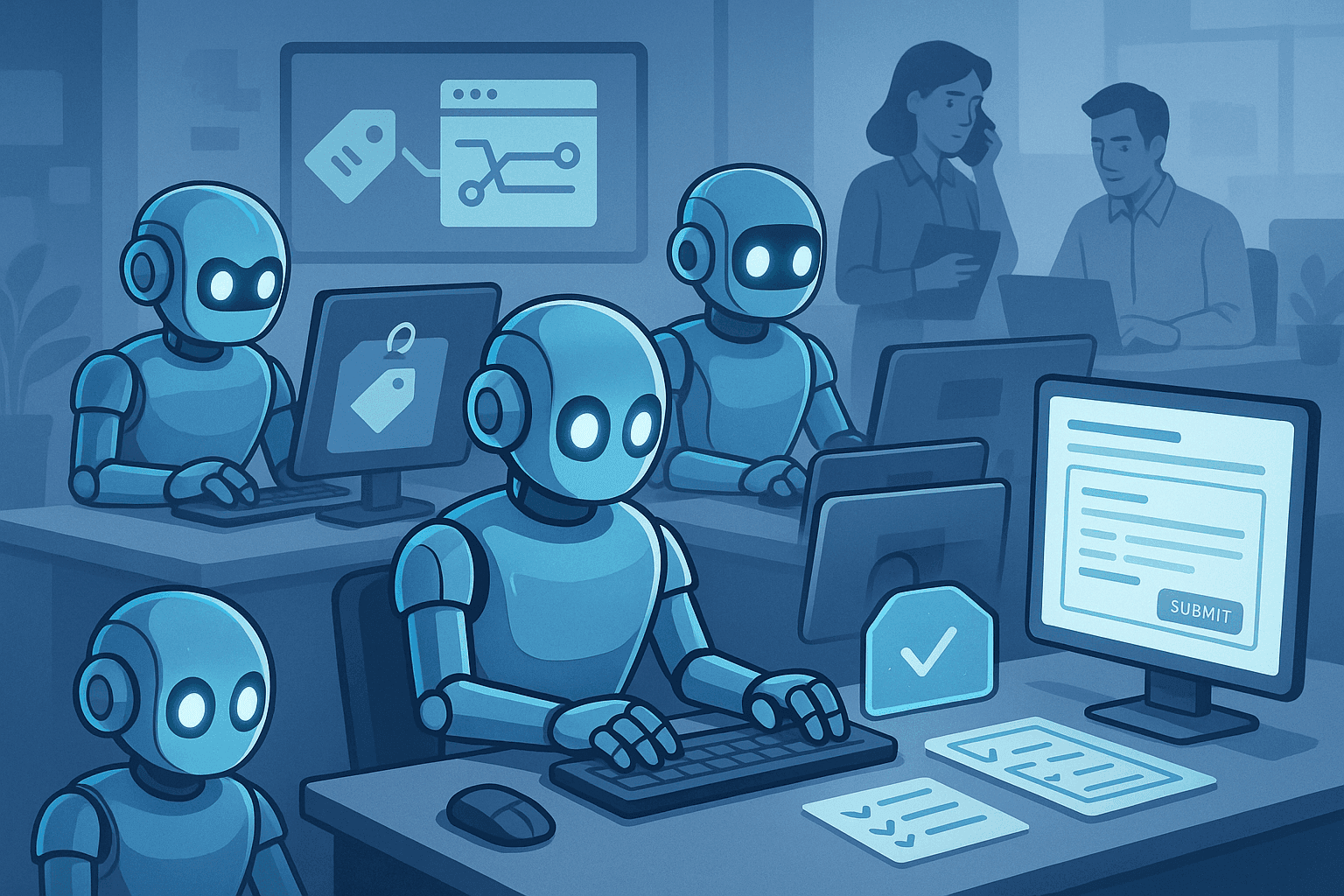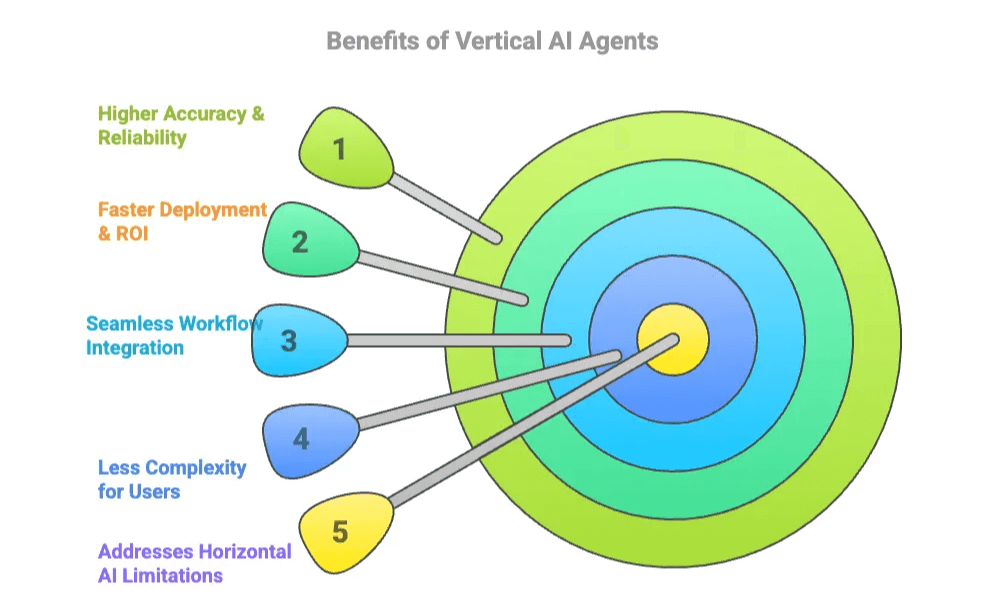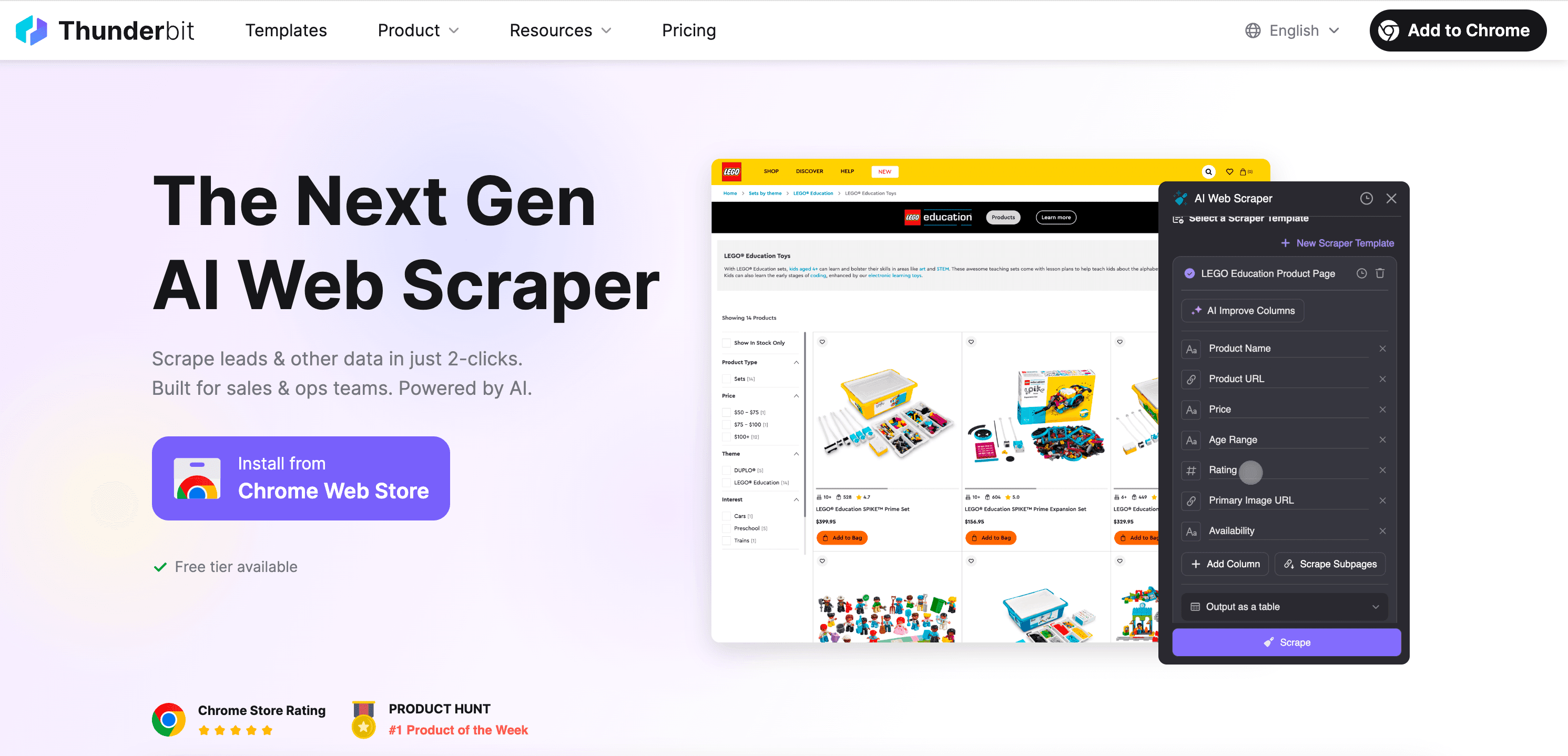Let me take you back to a moment not so long ago: I’m sitting in a crowded coffee shop, laptop open, watching a sales manager next to me painstakingly copy-paste hundreds of leads from a website into a spreadsheet. Meanwhile, her phone buzzes with Slack pings, her manager asks for a competitor price update, and her coffee goes cold. I couldn’t help but think—there’s got to be a better way. Fast forward to today, and the answer is clear: AI agents are not just a buzzword, but the new backbone of how businesses get things done.
And here’s the kicker: 83% of companies now say AI is a top priority in their business plans (). But not all AI agents are created equal. There’s a growing divide between “horizontal” AI agents that try to do everything, and “vertical” AI agents that focus on doing one thing extremely well. So, what exactly are vertical AI agents, and why are they the real solution for business impact? Let’s break it down—no jargon, just practical insights for anyone who wants to use AI to actually get work done.
Meet the AI Agents: What Are They and Why Do They Matter?
Let’s start with the basics. AI agents are like digital team members—software programs that can learn from data and then take action on their own, with little or no human input. Think of them as tireless interns who never need coffee breaks, never call in sick, and (if you set them up right) don’t make copy-paste mistakes.
Their core purpose? Automating repetitive tasks, improving efficiency, and supporting teams so real humans can focus on higher-value work. Whether it’s scraping leads, monitoring prices, or filling out forms, AI agents are quietly transforming how sales, ecommerce, and operations teams work behind the scenes.

But not all AI agents are built the same. There are two main flavors:
- Horizontal AI agents: Generalists that can handle a wide range of tasks across industries—think of them as Swiss Army knives.
- Vertical AI agents: Specialists that focus on a specific industry or workflow—think of them as the expert chef’s knife, razor-sharp and purpose-built.
Understanding this difference is the first step to choosing the right AI for your business.
Vertical AI Agents vs. Horizontal AI Agents: The Key Differences
So, what’s the real difference between a horizontal and a vertical AI agent? Let’s use a quick analogy: imagine you’re assembling a basketball team. The horizontal agent is your all-around player—good at a bit of everything, but not necessarily the best at any one thing. The vertical agent is your three-point specialist—maybe not great at defense, but when you need those points, they deliver every time.
Here’s a side-by-side comparison to make it concrete:
| Aspect | Horizontal AI Agents (Generalists) | Vertical AI Agents (Specialists) |
|---|---|---|
| Scope & Versatility | Broad—works across many industries and tasks (Multimodal.dev) | Narrow—built for a specific industry or workflow (Parangat) |
| Expertise Depth | Wide but shallow—may miss nuances | Deep—fine-tuned for industry-specific data, rules, and language (Multimodal.dev) |
| Integration | Easy to plug in, but often generic | Tailored to fit existing systems and workflows, aligns with compliance (Parangat) |
| Primary Benefits | Versatility, scale | Precision, relevance, and high accuracy (Multimodal.dev) |
| Best Suited For | General productivity across teams | Mission-critical, domain-specific processes (e.g., sales, ecommerce, real estate) (Multimodal.dev) |
The bottom line? Horizontal agents are great utility players, but vertical agents are the ones you want taking the last shot when it counts.
Why Vertical AI Agents Are the Real Solution for Business Impact
Here’s where things get interesting. In my experience (and I’ve seen a lot of AI projects fizzle out), the real-world value comes from vertical AI agents. Why? Because they’re built to solve a specific problem, in a specific context, with the right data and rules baked in.
Let’s break down the key advantages:

- Higher Accuracy & Reliability: Vertical agents know the lingo, the data formats, and the quirks of your industry. They’re less likely to make embarrassing mistakes or give you “close enough” answers ().
- Faster Deployment & ROI: Because they’re pre-tailored, you can get them up and running quickly—no endless customization or prompt engineering ().
- Seamless Workflow Integration: They slot right into the tools and processes you already use, whether that’s your CRM, ERP, or a good old spreadsheet ().
- Less Complexity for Users: No need to retrain or reconfigure every week. The expertise is built in, so your team can focus on outcomes, not troubleshooting ().
- Addresses Horizontal AI Limitations: Horizontal agents often require heavy customization and still might not “get” your business. Vertical agents come ready to work, with fewer errors and less maintenance ().
No wonder vertical AI agents are delivering 60–80% cost reductions and 4–12× speed improvements in some industries (). That’s not just a nice-to-have—that’s a competitive edge.
How Vertical AI Agents Work: Under the Hood
Let’s pop the hood and see what makes a vertical AI agent tick (don’t worry, you won’t get oil on your hands).
1. Domain-Specific AI Models:
Vertical agents are trained on the data, language, and rules of your industry. For example, a real estate agent knows what a “3BR/2BA” means, and a sales agent knows the difference between a lead and a contact ().
2. Built-In Business Rules & Logic:
They follow your playbook—think checklists, approval flows, or compliance rules. This means consistent, repeatable results, not random AI guesses ().
3. Integration with Existing Systems:
Vertical agents plug directly into your CRM, ERP, or database. They speak the same data language as your business ().
4. Continuous Learning with Guardrails:
They get smarter over time, but always within the boundaries of your business logic. No wild experiments—just steady improvement ().
Put simply, vertical AI agents are like highly trained specialists who never forget the rules and always have the latest data at their fingertips.
Real-World Applications: Where Vertical AI Agents Shine
Let’s get practical. Where do vertical AI agents deliver the most value? Here are some of the top use cases I see every week:

1. Sales & Lead Generation
- Scenario: Imagine a virtual SDR that automatically scrapes websites or LinkedIn for new leads, fills in contact info, and even sends out intro emails.
- Business Benefit: More qualified leads, less time on data entry, and faster outreach ().
2. Ecommerce & Operations (Product Data Extraction)
- Scenario: An AI web scraper monitors competitor prices and stock levels, updating your team’s spreadsheet every morning.
- Business Benefit: Real-time market intelligence, faster pricing decisions, and no more manual copy-paste ().
3. Real Estate & Property Monitoring
- Scenario: An AI agent aggregates property listings from Zillow, , and local MLS, sending alerts when new properties match your criteria.
- Business Benefit: Never miss a listing, save hours of research, and respond to market changes instantly ().
Here’s a quick summary table:
| Business Function | Example Use Case | Key Benefit |
|---|---|---|
| Sales & Marketing | Lead scraping, enrichment | Fills pipeline, saves hours, boosts conversion |
| Ecommerce Ops | Product/price monitoring | Real-time data, better decisions, cost savings |
| Real Estate | Listing aggregation | Timely intelligence, no missed opportunities |
| Customer Support | Industry-specific AI chat | 24/7 responses, higher accuracy, compliance |
| Finance | Fraud detection, analytics | Early issue detection, automation, fewer errors |
And that’s just the start—vertical AI agents are popping up in healthcare, legal, logistics, and more ().
Thunderbit: The AI Web Scraper Agent for Sales, Ecommerce, and More
Now, let’s talk about a vertical AI agent I know inside and out: . We built Thunderbit as an AI web scraper agent designed specifically for business users—sales, ecommerce ops, marketers, and realtors—who need to grab data from the web, fast.

What makes Thunderbit different? You use natural language input (“Scrape all product names and prices from this page”), and our AI analyzes the website structure. In just two clicks—“AI Suggest Fields” and “Scrape”—you get clean, structured data. No coding, no fiddling with selectors, no headaches.
Key features:
- AI Suggest Fields: Thunderbit reads the page and recommends exactly what fields to extract (e.g., Name, Price, Email).
- Subpage Scraping: Need more details? Thunderbit can automatically click through to each item’s detail page and enrich your dataset.
- Instant Export: Send your data straight to Excel, Google Sheets, Airtable, or Notion—free and instant.
- Pre-built Templates: For popular sites (Amazon, Zillow, LinkedIn), just pick a template and go.
- Scheduled Scraping: Set it and forget it—Thunderbit can scrape on a schedule, so your data is always fresh.
- AI Autofill: Not just scraping—Thunderbit can fill out online forms for you, too.
And yes, we made sure exporting and basic extractors (emails, phone numbers, images) are totally free. Because who wants to pay extra just to get their own data out?
Thunderbit in Action: Typical Workflows for Business Teams
Let’s walk through three real-world scenarios—no marketing fluff, just how teams actually use Thunderbit.
1. Sales Lead Scraping
- Step 1: Open a LinkedIn search results page.
- Step 2: Click “AI Suggest Fields”—Thunderbit proposes columns like Name, Title, Company.
- Step 3: Click “Scrape”—get all the leads in a table.
- Step 4: Use the email extractor to pull emails from profile pages.
- Step 5: Export to Google Sheets and hand off to your sales team.
Result: What used to take hours (or days) is now a 5-minute job. And the data is clean—no typos, no missing fields.
2. Ecommerce Price Monitoring
- Step 1: Set up Thunderbit to scrape competitor product pages every morning.
- Step 2: Use “AI Suggest Fields” to auto-detect Product Name, Price, Stock.
- Step 3: Schedule the scrape—Thunderbit runs it daily and exports the data to your spreadsheet.
- Step 4: Review the latest prices and adjust your own pricing strategy.
Result: Real-time market intelligence, no more manual checks, and you’re always a step ahead.
3. Real Estate Listing Automation
- Step 1: Point Thunderbit at Zillow, , and your local MLS.
- Step 2: Use a pre-built template for property listings.
- Step 3: Scrape main pages, then use “Scrape Subpages” to pull details like square footage and agent contact.
- Step 4: Export to Airtable or Notion for your team to review.
Result: A master list of properties, updated daily, with zero manual effort. Your agents never miss a new listing or price drop.
Want to see it in action? Download the or check out our for demos.
Choosing the Right AI Agent: What Businesses Should Consider
So, how do you pick between a horizontal and a vertical AI agent? Here’s my quick decision guide:
- Define Your Problem: Is it broad (lots of unrelated tasks) or narrow (one workflow)? Vertical agents shine for specific, repeatable processes ().
- Industry Specifics: Regulated or complex industry? Go vertical for built-in compliance and expertise.
- Budget & Resources: Vertical agents may cost more upfront, but deliver faster ROI if they automate a core process ().
- Scalability vs. Depth: Need to scale across many departments? Horizontal might fit. Need deep accuracy in one area? Vertical wins.
- Integration Needs: Vertical agents often fit better with your existing tools and workflows.
- Data Availability: Vertical agents need domain-specific data—make sure you have it or pick a tool that comes pre-trained.
- Pilot and Compare: Try both—see which delivers results with less effort.
- Stakeholder Buy-In: Involve end-users; if your team is non-technical, vertical agents are usually easier to adopt.
- Long-Term Strategy: Think about where you want to be in 2–3 years. Experts predict vertical agents will deliver greater ROI ().
Many companies use a hybrid approach: horizontal AI for general productivity, vertical AI for department-specific automation. The key is to match the tool to the job.
The Future of AI Agents: Trends and Takeaways for Business Leaders
Let’s wrap with a look at where things are headed—and what it means for you.
- Vertical is the New Horizontal: The future belongs to specialized AI agents that deliver real business value, not just fancy demos ().
- Multi-Agent Ecosystems: Companies will “hire” teams of AI agents—one for scraping, one for outreach, one for analytics—all working together ().
- Industry-Wide Adoption: Nearly 98% of companies globally are now experimenting with AI (). If your competitors are using vertical AI agents to cut costs and move faster, you can’t afford to fall behind.
- Model Accessibility: Open-source and pre-built vertical agents are making it easier (and cheaper) to get started, even for mid-sized companies ().
- Responsible AI: Vertical agents are easier to align with regulations and compliance, making them safer for mission-critical tasks ().
- Workforce Impact: AI agents are teammates, not replacements. The best teams will be those who figure out how to combine human creativity with AI efficiency ().
Key takeaway: The age of practical, business-focused AI is here—and it’s vertical. Start by identifying those repetitive, high-impact processes in your business. Chances are, there’s a vertical AI agent (like Thunderbit) ready to take them off your plate.
Ready to Try a Vertical AI Agent?
If you’re tired of endless copy-paste, manual data checks, or just want to see what a vertical AI agent can do for your team, give a spin. You can try it for free, and in just two clicks, you’ll see why vertical AI agents aren’t just the future—they’re the present.
And if you ever find yourself in a coffee shop, watching someone copy-paste leads by hand, send them this guide. Their coffee (and their manager) will thank you.
FAQs
1. What are vertical AI agents and how do they differ from horizontal AI agents?
Vertical AI agents are specialized tools designed for specific industries or workflows, offering deep expertise, high accuracy, and seamless integration with existing systems. In contrast, horizontal AI agents are generalists, useful for a wide variety of tasks but less precise and often require customization to fit particular business needs.
2. Why are vertical AI agents more effective for business impact?
Vertical AI agents deliver higher accuracy, faster ROI, and better integration into business workflows. They understand industry-specific terminology, rules, and data, which reduces errors and the need for ongoing configuration, making them ideal for mission-critical tasks.
3. What are some real-world use cases for vertical AI agents?
Vertical AI agents shine in areas like sales lead generation, ecommerce price monitoring, real estate listing aggregation, customer support, and finance analytics. They automate repetitive tasks like scraping data, monitoring updates, and generating alerts—saving time and improving decision-making.
4. How does Thunderbit exemplify a vertical AI agent?
Thunderbit is an AI web scraper built specifically for business teams. It uses natural language commands to extract structured data from websites, supports scheduled and subpage scraping, integrates with tools like Google Sheets and Airtable, and offers pre-built templates for sites like Amazon and Zillow—no coding required.
5. How should a business decide between using a vertical or horizontal AI agent?
Businesses should assess the complexity and specificity of the task, their industry requirements, and integration needs. Vertical AI agents are best for deep, repeatable, domain-specific tasks, while horizontal agents suit general productivity across teams. Many organizations benefit from using both in a hybrid approach.
Learn More: